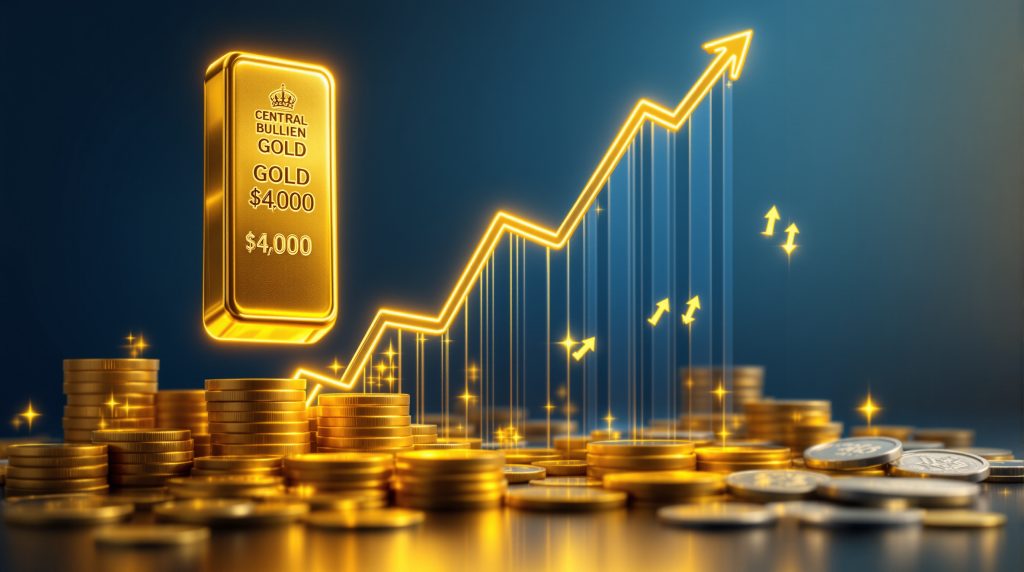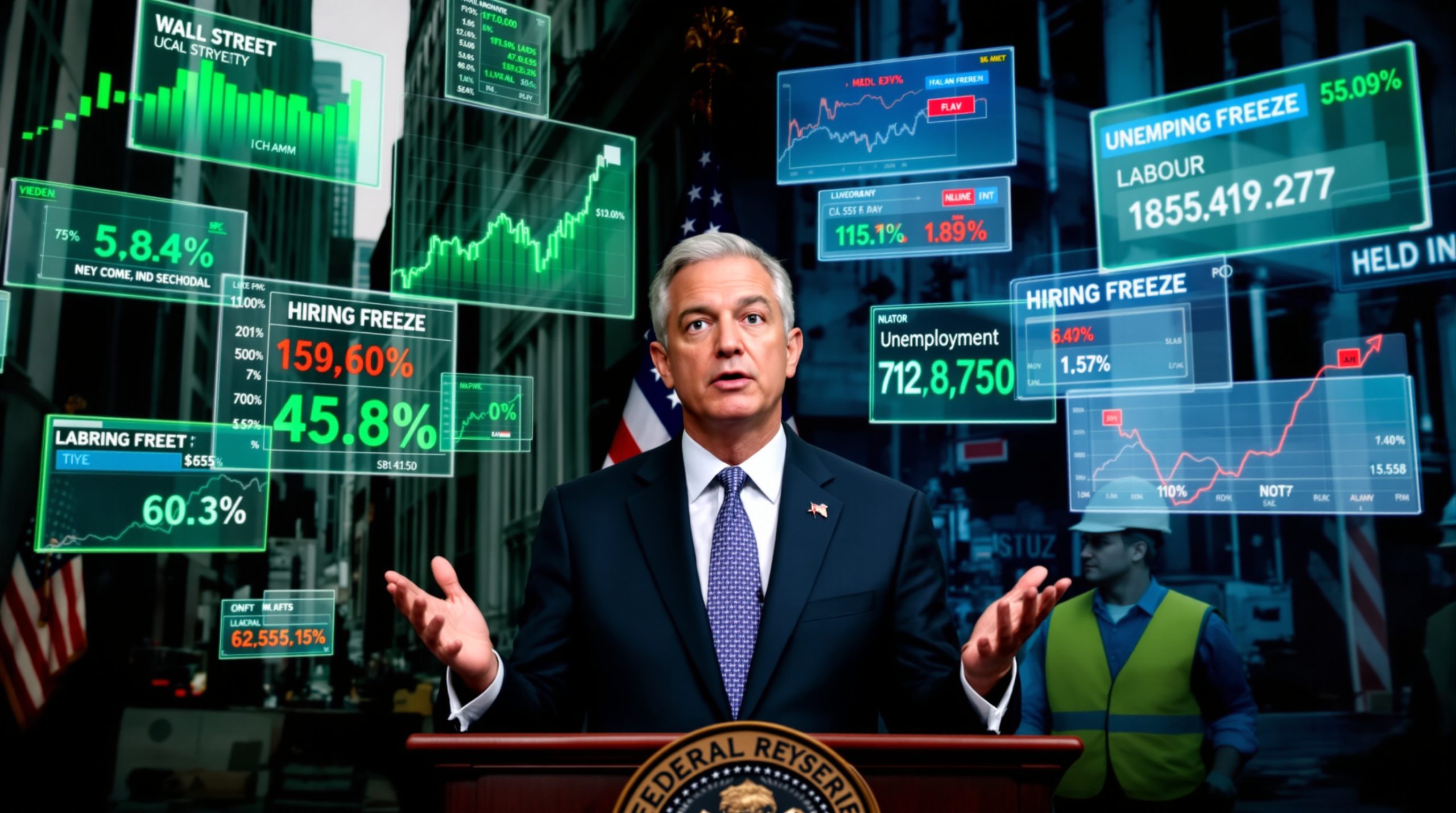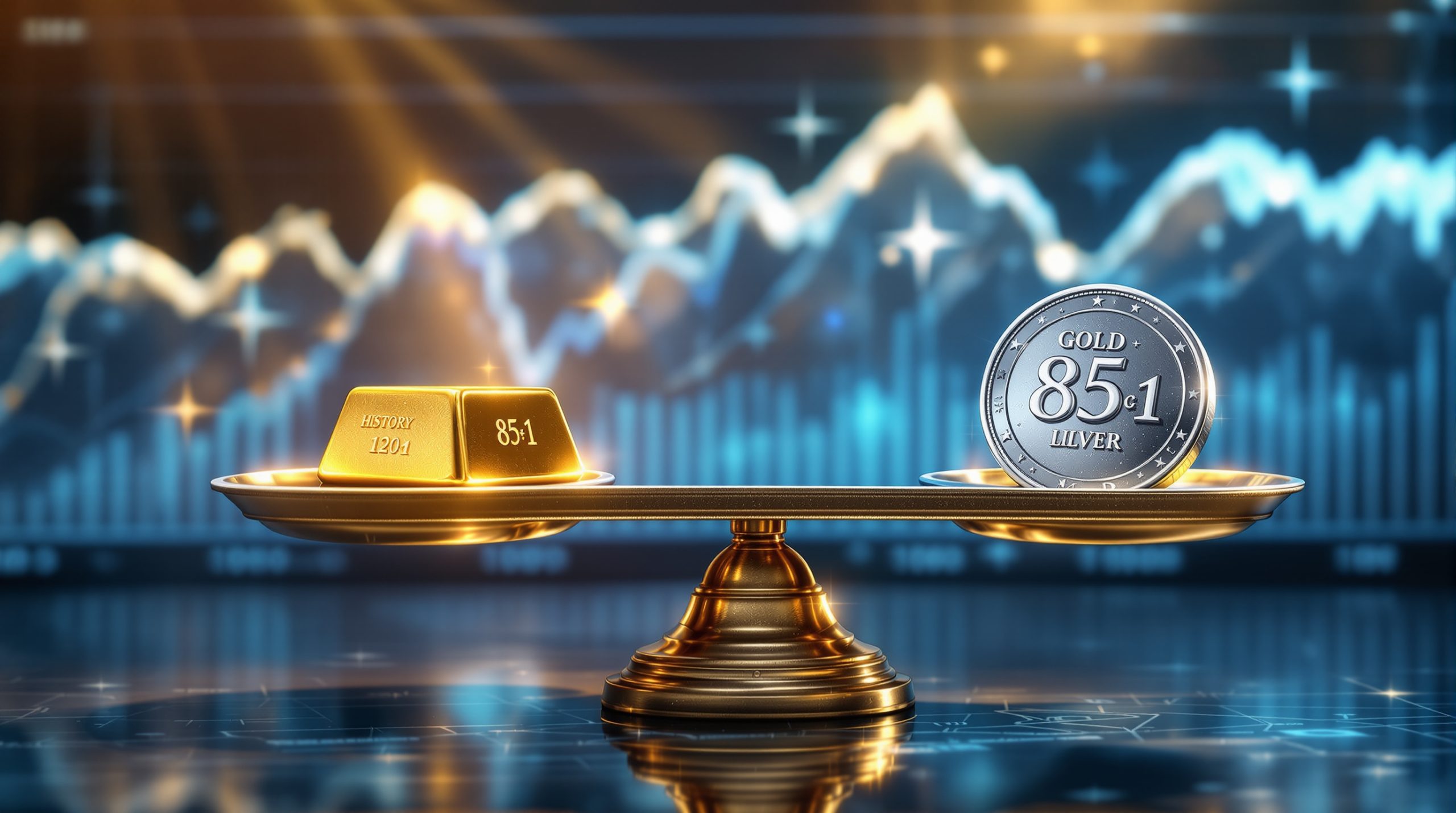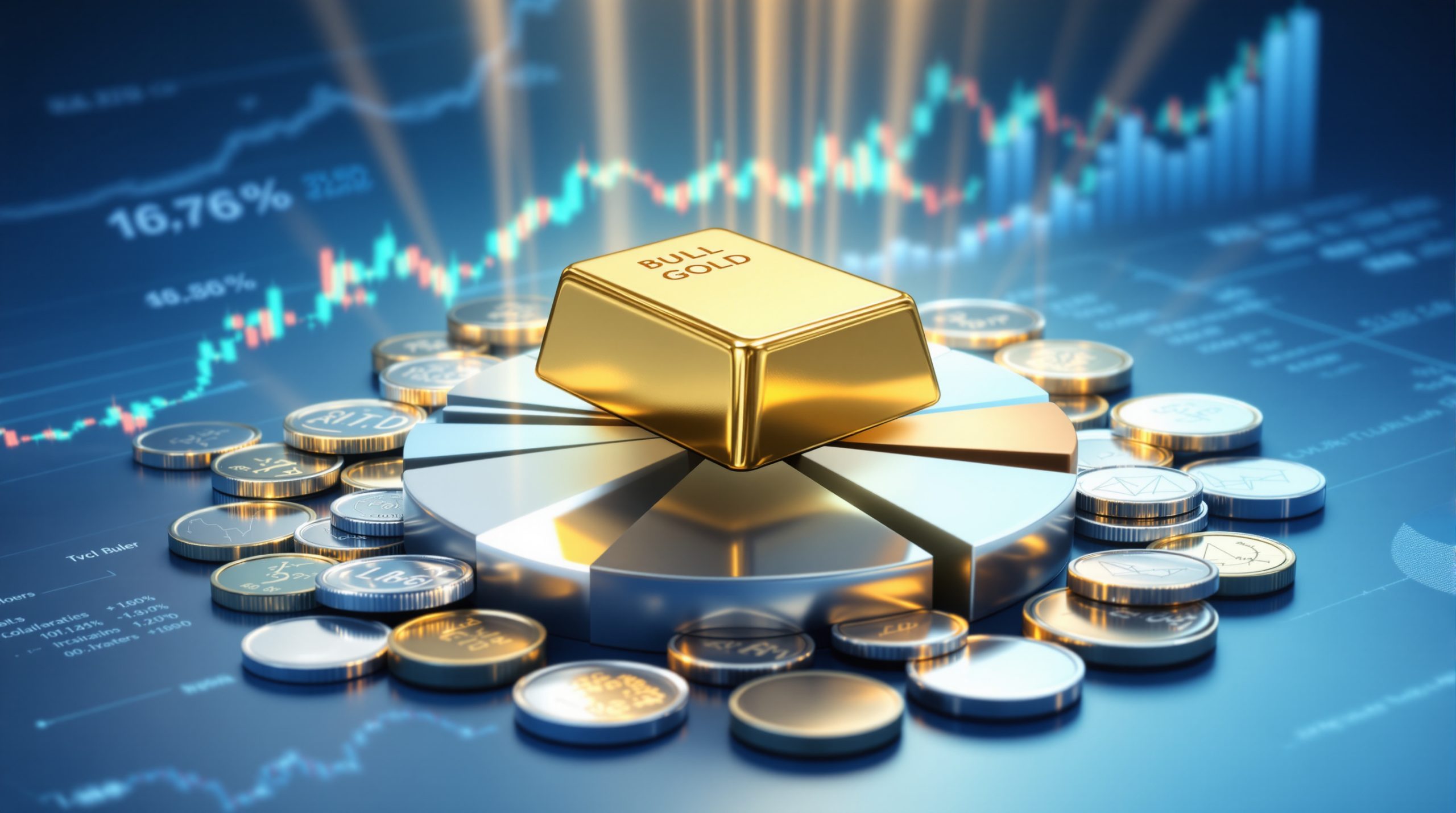How Has Gold Performed in Recent Years?
Gold has demonstrated remarkable strength in the precious metals market, with its impressive performance reflecting fundamental shifts in market dynamics and investor sentiment. The yellow metal has established itself as a reliable store of value during periods of economic uncertainty, attracting both institutional and retail investors seeking portfolio diversification.
Over recent years, gold has shown resilience despite fluctuating market conditions, with prices responding positively to several key factors. The metal's performance has been particularly noteworthy when viewed against the backdrop of volatile equity markets and changing monetary policy environments.
The Drivers Behind Gold's Multi-Year Rally
Central bank purchasing patterns have created a significant impact on gold markets, with national banks substantially increasing their gold reserves. This consistent structural demand has provided a solid foundation for price support and signals a shift in institutional attitudes toward gold as a strategic asset.
Geopolitical uncertainty continues to enhance gold's traditional safe-haven appeal. Regional conflicts, trade tensions, and diplomatic standoffs have repeatedly triggered flights to safety, benefiting precious metals as investors seek protection from market volatility.
Monetary policy expectations have played a crucial role in gold's performance trajectory. Anticipated interest rate adjustments, particularly potential cuts by major central banks, have bolstered the investment case for non-yielding assets like gold, which typically perform well when real interest rates decline.
ETF and institutional investment flows have demonstrated increasing confidence in gold's long-term value proposition. Strong inflows into gold-backed investment vehicles have provided additional price support, reflecting broader portfolio allocation strategies that favor precious metals during uncertain economic times.
Why Are Analysts Predicting a Correction?
Despite the strong uptrend, market analysts and industry experts widely acknowledge that gold may be entering overbought territory. Technical indicators suggest the market could be due for a healthy pullback before resuming its longer-term ascent toward higher price targets.
This potential correction should not be viewed as a reversal of the primary trend but rather as a natural market mechanism that helps establish more sustainable price levels. Historical patterns suggest that even the strongest bull markets include periodic retracements that ultimately strengthen the underlying trend.
Signs of an Imminent Pullback
Overbought technical indicators present a compelling case for a temporary price retreat. Momentum oscillators including the Relative Strength Index (RSI) often signal when an asset has advanced too far, too quickly, potentially setting the stage for profit-taking and consolidation.
Price acceleration patterns have emerged that typically precede consolidation phases. When prices move sharply upward in a compressed timeframe, the probability of a correction increases as short-term traders lock in profits and new buyers hesitate to enter at elevated levels.
Sentiment extremes often manifest near local tops, with excessive bullishness frequently preceding market corrections. When most market participants share the same optimistic outlook, contrarian signals suggest caution may be warranted in the immediate term.
Historical precedent shows that previous gold bull markets have consistently included 5-10% corrections within longer-term uptrends. These periodic pullbacks have historically provided entry opportunities for investors who missed earlier price advances.
The Expected Correction Range
Industry experts anticipate a potential 5-6% correction in the short term. This would represent a pullback to approximately the mid-$3,000s per ounce from recent highs, providing a potential entry point for investors waiting on the sidelines.
This correction range aligns with technical support levels established during gold's previous consolidation phases. Market technicians often identify these areas as likely stabilization zones where buying interest may reemerge.
What Factors Will Drive Gold Beyond $4,000 in 2026?
Despite the expected near-term correction, the consensus among industry participants points to gold reaching the $4,000 milestone in the coming years. Several fundamental catalysts support this longer-term bullish outlook.
The multi-year gold uptrend correction before 2026 appears to be built on structural changes in how investors and institutions view the precious metal. As traditional fiat currencies face increasing challenges, gold's monetary properties have received renewed attention from market participants.
Fundamental Catalysts for Higher Prices
Federal Reserve policy trajectory represents a critical factor in gold's outlook. The expected continuation of monetary easing through the coming years would likely create a favorable environment for gold, as lower interest rates reduce the opportunity cost of holding non-yielding assets.
Persistent inflation concerns continue supporting hard assets like gold. Even if headline inflation moderates, lingering concerns about currency debasement and negative real interest rates tend to drive investors toward tangible stores of value.
Structural supply-demand imbalances are developing in the gold market. Limited mine supply growth versus rising investment and central bank demand creates potential pricing pressure, especially during periods of heightened market stress.
Political uncertainty and potential policy shifts may affect market confidence and economic stability. Changes in fiscal policy, regulatory frameworks, and international trade relationships could introduce additional volatility that benefits safe-haven assets.
Price Targets and Timeframes
Industry forecasts for gold prices continue to trend higher, with many projections suggesting the potential to exceed $4,000 in the coming years. These forecasts align with the broader industry consensus that views any correction as a temporary pause within a multi-year bull market.
The timeframe for reaching these targets depends on several variables, including the pace of monetary policy adjustments, inflation developments, and geopolitical events. However, the underlying trend suggests continued upward pressure on gold prices reaching all-time highs over the medium to long term.
How Does Silver Factor Into the Precious Metals Outlook?
Silver has emerged as another compelling investment case within the precious metals sector. The gold-to-silver ratio, a key metric watched by precious metals investors, has begun to favor silver as industrial demand complements investment interest.
The dual nature of silver—functioning both as a monetary metal and an industrial commodity—creates unique market dynamics that differ from gold. This characteristic often leads to higher volatility but also potentially greater upside during precious metals bull markets.
Silver's Dual-Demand Drivers
Industrial applications continue expanding silver's demand base. Growing use in electronics and renewable energy sectors, particularly solar panels, has created substantial consumption requirements that support prices independent of investment demand.
Investment demand has risen alongside gold as monetary concerns increase. Silver's historical role as "the people's money" often attracts retail investors seeking exposure to precious metals at a lower entry point than gold.
Supply constraints present another supportive factor for silver prices. Ongoing production challenges, including declining ore grades and environmental restrictions, have limited the ability of miners to quickly respond to higher prices with increased output.
Technical breakout patterns suggest the beginning of a new uptrend in silver prices. Chart formations indicate potential for continued price appreciation as silver benefits from both safe-haven investment flows and industrial consumption.
What Investment Strategies Should Be Considered During This Cycle?
For investors looking to capitalize on the precious metals trend while managing the risks of potential corrections, several strategic approaches merit consideration. Different investor profiles require customized approaches to metals exposure.
The precious metals sector offers multiple avenues for participation, from physical bullion to mining shares to derivative products. Each vehicle presents distinct risk-reward characteristics that should align with individual investment objectives and risk tolerance.
Tactical Approaches for Different Investor Types
Long-term investors might consider using the expected correction as an entry point for building or adding to core positions. Dollar-cost averaging into physical metals or related investment vehicles can help mitigate timing risk while establishing meaningful exposure to the sector.
Active traders can prepare for increased volatility with appropriate position sizing and risk management. Implementing stop-loss orders, profit targets, and proper allocation percentages helps protect capital while pursuing shorter-term opportunities in the metals markets.
Portfolio diversification across different precious metals can capture varied price movements and risk profiles. Allocating among gold, silver, platinum, and palladium provides exposure to different supply-demand dynamics and economic sensitivities.
Timing considerations suggest phased entry strategies may prove more effective than attempting to time the exact bottom of any correction. Establishing initial positions at current levels while reserving capital for potential lower entry points represents a balanced approach to uncertain short-term price action.
How Will Central Bank Policies Impact Gold's Trajectory?
Central bank decisions, particularly those of the Federal Reserve, remain pivotal to gold's price action. Monetary policy frameworks significantly influence precious metals markets through their effects on interest rates, currency values, and inflation expectations.
The relationship between gold and central bank policy has historically been strong, with periods of monetary accommodation typically coinciding with rising gold prices. This correlation stems from gold's role as an alternative to fiat currencies that can be created through electronic money printing.
Monetary Policy Implications
Interest rate environment changes directly affect the opportunity cost of holding non-yielding assets like gold. Lower rates reduce the relative disadvantage of owning assets that don't provide interest or dividends, supporting precious metals prices.
Currency devaluation concerns often accompany monetary easing programs, potentially weakening the US dollar and supporting gold prices. As the dollar's purchasing power declines, gold's value in dollar terms typically increases, reflecting its role as a monetary alternative.
Balance sheet considerations by major central banks impact broader market liquidity and risk sentiment. Expansion or contraction of central bank assets through quantitative easing or tightening programs creates ripple effects that influence precious metals positioning.
Forward guidance impact extends beyond immediate policy decisions to shape market expectations. Central bank communications about future policy directions often trigger anticipatory positioning in gold markets, sometimes moving prices even before actual policy changes occur.
What Technical Indicators Support the Long-Term Uptrend?
While short-term technical signals suggest overbought conditions, longer-term chart patterns and indicators continue to support the bullish case for gold extending into the future. Technical analysis provides valuable insights into potential price trajectories by identifying historical patterns and market structures.
Price action analysis reveals important information about market psychology and potential future movements. The establishment of higher lows and higher highs—the classic definition of an uptrend—provides a foundation for continued bullish expectations.
Key Technical Factors
Multi-year breakouts have occurred with prices trading well above previous resistance levels. These technical developments often signal the beginning of new, higher trading ranges and reflect shifting market sentiment toward the underlying asset.
Strong volume profiles indicate increasing participation during price advances. Rising volumes during upward price movements suggest genuine buying interest rather than technical short-covering, supporting the sustainability of the price trend.
Trend strength indicators provide positive readings on long-term momentum measures. Technical tools like the Moving Average Convergence Divergence (MACD) and directional movement indexes help quantify the strength and durability of the primary trend.
Support level establishment has occurred during consolidation phases, forming new price floors. These technical support zones often represent areas where buying interest emerges, providing downside protection during market corrections.
How Are Geopolitical Factors Influencing the Gold Market?
Geopolitical tensions have historically supported gold prices, and current global uncertainties continue to enhance the metal's appeal as a safe-haven asset. The complex interplay of international relations, trade policies, and regional conflicts creates an environment where risk hedging becomes increasingly important.
The precious metals market remains sensitive to developments that threaten economic stability or international cooperation. During periods of heightened geopolitical risk, gold often outperforms more economically-sensitive assets.
Geopolitical Considerations
Regional conflicts create uncertainty in global markets, typically benefiting safe-haven assets. Military engagements, territorial disputes, and political instability in key regions can trigger risk-off sentiment that supports record-breaking gold prices.
Trade relationships and their evolution affect economic outlooks and market sentiment. Tariff implementations, trade agreements, and supply chain disruptions influence both real economic activity and financial market perceptions of risk.
Political transitions introduce policy uncertainty that markets must discount. Leadership changes at national levels can signal potential shifts in economic management, regulatory frameworks, and international relations that impact investor positioning.
Resource nationalism has emerged as a growing trend affecting mining operations globally. Government policies regarding critical mineral assets, including restrictions on foreign ownership, increased taxation, or outright nationalization, influence supply dynamics for precious metals.
What Are the Risks to the Bullish Gold Thesis?
While the consensus points to higher gold prices after a correction, several factors could potentially challenge this outlook. Recognizing potential headwinds allows investors to develop more robust gold investment strategies 2025 that account for multiple scenarios.
Risk assessment requires considering both known challenges and potential unexpected developments. The most significant market movements often result from factors that weren't widely anticipated by consensus opinion.
Potential Headwinds
Stronger-than-expected economic data could reduce safe-haven demand for gold. If global growth accelerates beyond current expectations, investor appetite for defensive assets might diminish as capital flows toward higher-yielding opportunities.
Central bank policy shifts toward a more hawkish monetary stance than currently anticipated would present challenges for gold prices. Unexpected interest rate increases or accelerated balance sheet reductions could strengthen currencies at the expense of precious metals.
Market sentiment changes sometimes occur rapidly as investors rotate from defensive to growth assets. During periods of improving risk appetite, gold might temporarily lose its appeal as capital seeks exposure to sectors with higher return potential.
Technical breakdown scenarios must be considered as part of comprehensive risk management. Failure to maintain support levels during correction phases could trigger additional selling pressure from technical traders and momentum-following investment strategies.
FAQ: Gold's Path to $4,000
When is gold expected to reach $4,000 per ounce?
Most industry analysts project gold will approach or surpass the $4,000 milestone in the coming years, following a period of consolidation and potential correction. This timeline depends on several factors, including monetary policy developments, inflation trends, and geopolitical events that could affect the gold price forecast 2025.
What magnitude of correction should investors prepare for?
Industry experts suggest a 5-6% pullback could occur, which would represent a temporary decline from recent highs. This potential correction aligns with typical retracement patterns observed in previous gold bull markets.
How are central banks influencing the gold market?
Central banks have become consistent net buyers of gold, adding substantial tonnage to their reserves annually. This institutional purchasing creates structural support for prices and signals a shift in official sector attitudes toward gold as a strategic reserve asset.
Will silver continue to outperform gold?
Many analysts believe silver has additional upside potential due to its dual role as both an investment asset and industrial metal. Its applications in green energy technologies, including solar panels, provide demand drivers beyond pure investment flows.
What signals would indicate the correction is complete?
Technical indicators such as oversold readings on momentum oscillators, positive divergences, and renewed buying pressure on higher volume would suggest the correction phase has concluded. Price stabilization near established support levels followed by upward movement would confirm the resumption of the primary trend toward a historic 3000 price surge in gold.
Ready to Spot the Next Big Mining Discovery on the ASX?
Discovery Alert's proprietary Discovery IQ model delivers instant notifications when significant mineral discoveries are announced on the ASX, giving you a crucial market advantage before the broader market reacts. Visit our discoveries page to see how historic mineral discoveries have generated substantial returns for early investors.




